
Syzygium Plant
350 - 1,000 Per
100 Piece (MOQ)
Syzygium is a genus of flowering plants in the myrtle family, Myrtaceae. It includes a wide variety of species, many of which are commonly referred to as "Syzygium" or "lilly pilly" plants. These plants are known for their attractive foliage, colorful berries, and sometimes fragrant flowers. Syzygium species are native to various regions, including Australia, Southeast Asia, and the Pacific Islands. Here are some key features and information about Syzygium plants: Foliage: Syzygium plants typically have glossy, evergreen leaves that can vary in size and shape depending on the species. The leaves are often lance-shaped or elliptical and may be dark green, coppery, or bronze in color. Flowers: Syzygium species produce small, often white or cream-colored flowers with a pleasant fragrance. The flowers are typically borne in clusters and can attract pollinators like bees and butterflies. Fruit: One of the most notable features of Syzygium plants is their colorful fruit, which is often berry-like. The fruit can be red, purple, pink, or white, depending on the species. These fruits are not only visually appealing but can also be edible, although taste and texture can vary. Growth Habit: Syzygium plants vary in growth habit, with some being small shrubs and others becoming large trees. They are often used in landscaping for hedging, topiary, or as ornamental specimens. Uses: Some Syzygium species are cultivated for their edible fruit, while others are primarily grown for their ornamental value. In addition to landscaping and gardening, they may have cultural or medicinal uses in certain regions. Common Species: Some well-known Syzygium species include Syzygium luehmannii (Riberry), Syzygium australe (Brush Cherry), Syzygium aromaticum (Clove), and Syzygium cumini (Java Plum or Jamun). Maintenance: Syzygium plants are generally easy to grow and maintain. They prefer well-drained soil, regular watering, and a sunny to partially shaded location. Pruning can help maintain their shape and encourage bushier growth. Pests and Diseases: Syzygium plants can be susceptible to various pests and diseases, including aphids, scale insects, and fungal infections. Regular inspection and appropriate care can help mitigate these issues. Overall, Syzygium plants are versatile and attractive additions to gardens and landscapes, offering a combination of aesthetic appeal and, in some cases, edible fruit. The specific care requirements and appearance of a Syzygium plant can vary depending on the species, so it's essential to research and select the right one for your gardening needs and climate.
Color : Green, Red,Grey
Application : Decoration, Hotel, Mall, Party
Size : Multisizes
Feature : Shiny
Type : Decorative Plants
Country of Origin : India
...more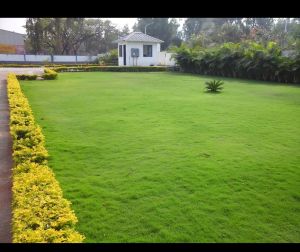
selection grass
4 - 6 Per
1000 Square Feet (MOQ)
Selection carpet grass is a type of natural grass that is used for lawns, gardens, landscapes, rooftops, terraces, playgrounds, parks, and other outdoor areas. It is also known as Mexican grass or Selection No 1 grass. It is popular for its softness, light green color, fast growth, and shade tolerance. It can withstand high and low temperatures and requires moderate watering and maintenance. Selection carpet grass is widely available in India and can be purchased as ready-made lawn grass carpet rolls or loose grass. Some of the leading suppliers of Selection carpet grass in India are:
Color : Green
Application : Garden
Style : Fresh
Packaging Type : Roll
Country of Origin : India
Freshsness : 98%
...more
rubber plant
130 - 350 Per Piece
150 Piece (MOQ)
A rubber plant is a type of ficus tree that has glossy, dark green leaves and can grow up to 100 feet tall in its natural habitat. It is native to eastern parts of South and Southeast Asia, but it is also grown as a houseplant in other regions. It is not used to produce natural rubber, but it has some ornamental and cultural uses. For example, in parts of India, people guide the roots of the rubber plant over chasms to form living bridges. You can learn more about the rubber plant from these web sources
Color : Green
Condition : Fresh
Application : For Decoration Purpose
Style : Fresh
Feature : Eco-Friendly, Fast Growth, Natural
Age Group : 0-1 Yr
Type : Rubber Plants
Country of Origin : India
Height : 0-4 Feet
Other Necessities : Fast Growth
...more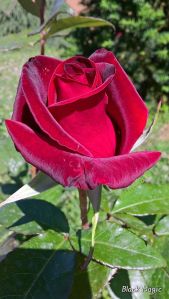
Rose Plant
25 - 70 Per
500 pieces (MOQ)
Rose Plant Flower is not a specific name, but a general term that can refer to any flower that is produced by a rose plant. As I mentioned before, there are over 100 species and thousands of cultivars of roses, which vary in size, shape, color and fragrance. Some of the most popular types of rose flowers are hybrid tea roses, floribunda roses, grandiflora roses, miniature roses, climbing roses, shrub roses and old garden roses. Each type of rose flower has its own characteristics and meanings. For example, hybrid tea roses are the most common and classic roses that have large, high-centered blooms with long stems. They are often used for cut flowers and bouquets. Floribunda roses are smaller and more compact than hybrid tea roses, but they produce clusters of flowers that bloom continuously throughout the season. They are ideal for borders and hedges. Grandiflora roses are a cross between hybrid tea and floribunda roses, combining the best features of both. They have large, elegant flowers on long stems, but they also produce multiple blooms per stem. They are suitable for mixed borders and specimen plants. Some other examples of rose flower types are:
Color : Orange, Pink, Red, White, Yellow
Application : Decoration, Planting
Style : Fresh
Country of Origin : India
...more
rhapis excelsa palm plant
250 - 1,550 Per
150 Piece (MOQ)
The Rhapis excelsa, commonly known as the Lady Palm or Bamboo Palm, is a popular indoor and outdoor palm plant that is appreciated for its elegant appearance, durability, and adaptability. It is native to Southeast Asia, specifically China and Taiwan. Here is some information about the Rhapis excelsa palm: Appearance: The Lady Palm is known for its graceful and attractive appearance. It features multiple stems, or canes, covered in dark fibers that resemble bamboo. Each cane is crowned with lush, deep green, fan-shaped leaves, creating a lush and bushy appearance. The leaves are divided into segments, giving them a delicate and feathery look. Size: Rhapis excelsa is a slow-growing palm that can reach a height of 6 to 12 feet (1.8 to 3.7 meters) when grown in ideal conditions, making it a relatively compact palm compared to some other palm species. Growth Habit: The Lady Palm has a clumping growth habit, meaning it produces multiple canes from the base of the plant, giving it a full and dense appearance. Location: Rhapis excelsa palms are well-suited for both indoor and outdoor cultivation. They thrive in bright, indirect light but can tolerate lower light conditions, making them a popular choice for interior spaces. When grown outdoors, they do well in partial to full shade, although they can adapt to various light levels. They prefer well-draining soil. Care and Cultivation: Lady Palms are known for their hardiness and adaptability. They require regular watering but should not be kept overly wet, as they can be susceptible to root rot. Regular misting of their leaves can help maintain humidity, which they appreciate. Fertilize periodically during the growing season to promote healthy growth. Pruning dead or yellowing fronds can help maintain the plant's appearance. Uses: The Lady Palm is a popular choice for interior landscaping and is commonly used as a decorative plant in homes, offices, and public spaces. It adds a touch of elegance and a tropical feel to indoor settings. Outdoors, it is used in landscaping for shade gardens, patios, and as a container plant. Maintenance: Rhapis excelsa is relatively low-maintenance. As it is a slow-grower, it doesn't require frequent repotting or pruning. It can withstand occasional neglect, which makes it suitable for those who may not have a green thumb. The Lady Palm is valued for its decorative beauty and adaptability, making it a popular choice for those seeking an elegant and low-maintenance indoor or outdoor plant with a tropical touch.
Color : Green
Application : Gardening & Landscaping Trees
Country of Origin : India
...more
poinsettia plant
60 - 450 Per
150 Piece (MOQ)
The Poinsettia, known scientifically as Euphorbia pulcherrima, is a popular ornamental plant particularly associated with the Christmas season. It is native to Mexico and Central America and is known for its striking red, white, or pink bracts (modified leaves) that surround small, inconspicuous yellow flowers. Here is some information about the Poinsettia plant: Appearance: Poinsettias are bushy, woody shrubs with dark green, elliptical leaves. The real attraction is their bracts, which are often mistaken for flowers. These bracts are typically bright red, but you can also find varieties in white, pink, and other colors. The actual flowers are small and yellow and located in the center of the bracts. Seasonal Significance: Poinsettias are closely associated with the Christmas holiday season. They are often used as decorative elements in homes, churches, and public spaces during this time. In the United States, National Poinsettia Day is celebrated on December 12th, which is the date of the death of Joel Poinsett, the American diplomat who introduced the plant to the U.S. Care and Cultivation: Poinsettias require specific care to thrive and rebloom. They should be placed in a location with bright, indirect light. They prefer consistently moist, but not waterlogged, soil. Temperature is crucial for flowering; they need 12-14 hours of darkness each day for about 8-10 weeks to initiate the color change in the bracts, simulating the natural conditions in their native Mexico. After this period, they can be brought back into regular light conditions for their colorful bracts to develop. Toxicity: It's important to be aware that Poinsettias are considered mildly toxic to pets and humans. Ingesting the plant may cause mild stomach discomfort, so it's a good idea to keep them out of reach of children and pets. Uses: Poinsettias are primarily grown for their ornamental value, particularly during the holiday season. They are often given as gifts, used for decorating homes and public spaces, and even used as cut flowers in floral arrangements. Their festive colors and association with Christmas make them a popular choice for adding a touch of holiday cheer to indoor spaces. Poinsettias are a beloved and iconic symbol of the holiday season, and they bring a festive and colorful touch to homes and public spaces during the winter months. With proper care, you can enjoy their beautiful bracts and the holiday spirit they evoke.
Color : Red
Application : Planting
Feature : Eco Friendly, Long Life
Country of Origin : India
...more
Petunia Flower Plant
25 - 40 Per Piece
150 Piece (MOQ)
Petunias are popular flowering plants known for their colorful and trumpet-shaped blossoms. These annuals or perennials are widely grown in gardens, hanging baskets, and containers for their vibrant and long-lasting flowers. Here is more information about the Petunia flower: Appearance: Petunias come in various colors, including shades of purple, pink, red, white, and even bi-colored varieties. The trumpet-shaped flowers have a distinct appearance and can be single or double-petaled, depending on the cultivar. Growth Habit: Petunias have a low-spreading or trailing growth habit, making them ideal for use in hanging baskets, containers, window boxes, and garden borders. Some varieties can reach a height of 6 to 18 inches (15 to 45 cm), while trailing types can cascade several feet. Foliage: The leaves of Petunia plants are typically dark green, and they serve as a nice backdrop to the colorful blossoms. Flowering: Petunias are known for their prolific and long-lasting blooms. They tend to flower throughout the growing season, from late spring to early fall, and sometimes even longer in mild climates. Regular deadheading (removing spent flowers) can help promote continuous blooming. Fragrance: While many modern cultivars are bred for their appearance, some Petunias have a pleasant fragrance, which is particularly strong in the evening. Care and Cultivation: Petunias are relatively easy to grow. They prefer full sun but can tolerate some light shade. They thrive in well-draining soil and require regular watering to keep the soil consistently moist. However, it's essential to avoid overwatering, as this can lead to issues like root rot. Fertilizing with a balanced, water-soluble fertilizer can help encourage healthy growth and blooming. Uses: Petunias are versatile and are used in a variety of ways in gardening and landscaping. They make excellent choices for: Container gardening: Their trailing varieties are commonly used in hanging baskets, window boxes, and pots. Bedding plants: They can be used to create colorful borders and flower beds. Ground covers: Low-spreading types can be used to cover larger areas. Annual displays: They are popular choices for adding vibrant color to annual flower displays. Varieties: There is a wide range of Petunia cultivars available, including grandiflora, multiflora, and milliflora types, each with its own flower size, growth habit, and characteristics. Petunias are loved for their versatility, vibrant blooms, and ease of care. Whether you're looking to add color to your garden, hang flowers from your porch, or brighten up a sunny spot in your yard, Petunias are a popular choice for achieving a burst of floral beauty.
Color : Mulit Colour
Application : Gardening
Type : Flowering Plants, Petunia Flower
Country of Origin : India
Soil Specific : Clay
...more
Pandanus Plant
20 - 60 Per Piece
250 Piece (MOQ)
Pandanus plants are tropical plants that can be grown in the garden or indoors, depending on the climate and the care they receive. Here are some tips on how to grow pandanus plants in the garden: Choose a spot that gets full sun or partial shade, and has fertile, humus-rich, moist but well-drained soil1 Plant pandanus plants in black plastic pots to help them get heat over winter2 Water pandanus plants regularly, especially in warmer seasons, to keep the soil moist but not soggy2 Fertilize pandanus plants every week with a complex fertilizer with a reduced nitrogen content from spring to autumn3 Prune pandanus plants by removing dry or damaged leaves. Be careful of the prickly edges of the leaves3 Protect pandanus plants from frost, drought, and pests. Cover them with a frost cloth or move them indoors if the temperature drops below 10°C2 Use pandanus leaves as a natural repellent for cockroaches2 I hope this information helps you grow pandanus plants in your garden. If you want to see some pictures of pandanus plants, you can check out the image search results from my tool output.
Color : Green, Red,Grey
Application : Decoration, Hotel, Mall, Party
Size : Multisizes
Type : Decorative Plants,Fresh Pandanus Plant
Country of Origin : India
...more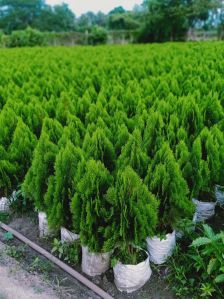
Morpankhi Plant
90 - 170 Per
250 Piece (MOQ)
Morpankhi plant is a common evergreen shrub that belongs to the cypress family. It has needle-like leaves that are considered sacred in some religions. It is also known as Thuja, Vidhya, or Oriental arborvitae. Here are some facts about this plant: It can grow up to 50 ft tall and 20 ft wide, but it is usually pruned to a smaller size. It is native to America and Asia, and can tolerate a range of climates and soils. It is propagated by seeds or cuttings, preferably in summer when the branches are flexible. It prefers full sun to part shade, and needs regular watering and fertilizing. It is believed to bring good luck, prosperity, and harmony to the house where it is planted. It should be planted at the entrance of the house, preferably in pairs, in the north or east direction. It should be replaced if it starts to dry up, as it may indicate negative energy or financial problems.
Color : Green
Packaging Type : Pot And Poly Bage
Country of Origin : India
Application : Landscaping Design
...more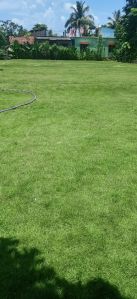
Mexican Grass
6 - 8 Per Square Feet
1000 Square Feet (MOQ)
Mexican grass is a common name for Mexican feather grass, a perennial ornamental grass that is native to parts of North and South America. It is also known as pony tails, silky thread grass, or Texas tussock. Mexican grass has thin, green leaves that form dense clumps and produce feathery flower heads that sway in the wind. It is a drought-tolerant plant that grows well in full sun and well-drained soil. It can be used as a ground cover, a border plant, or a container plant. However, Mexican grass can also be invasive in some regions, such as California, where it can spread rapidly and displace native plants. It is also a fire hazard in dry areas. Therefore, it is important to control its growth and prevent its seeds from escaping into the wild
Material : Natural Grass Carpet
Color : Green
Length : 10 Sq Ft
Thickness : 1-15 Mm
Country of Origin : India
...more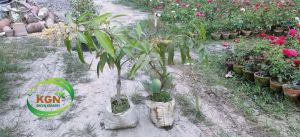
Mango Tree
35 - 450 Per Piece
100 Piece (MOQ)
Mangifera indica, commonly known as mango, is a species of flowering plant in the family Anacardiaceae. It is a large fruit tree, capable of growing to a height of 30 metres. There are two distinct genetic populations in modern mangoes – the "Indian type" and the "Southeast Asian type
Color : Green
Type : Mango Tree
Maturity : 99%
Country of Origin : India
Height : 10-12 Feet
...more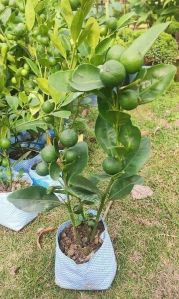
lemon tree
55 - 250 Per Piece
150 Piece (MOQ)
The lemon tree, scientifically known as Citrus limon, is a small to medium-sized evergreen tree from the Rutaceae family. It is famous for its vibrant yellow, acidic fruits and is cultivated worldwide for culinary, ornamental, and medicinal purposes. Here is some information about the lemon tree: Appearance: Lemon trees are small to medium-sized trees with a dense, bushy canopy. The leaves are elliptical, glossy, and bright green, giving the tree an attractive and fresh appearance. Fruits: Lemon trees produce small, bright yellow fruits known as lemons. These fruits are typically oval or elliptical, with a tangy and acidic taste. They are often used in a variety of culinary dishes, drinks, and desserts. Flowers: Lemon trees bear fragrant white flowers, which are often referred to as "blossoms." These flowers are typically solitary or grouped in small clusters and are pollinated by bees. Varieties: There are numerous lemon varieties, each with unique characteristics, such as size, shape, and flavor. Some popular lemon varieties include Eureka, Lisbon, Meyer, and Ponderosa. Cultivation: Lemon trees thrive in tropical and subtropical climates with warm temperatures. They require well-drained soil and full sunlight for optimal growth. Regular watering and fertilization are essential for healthy fruit production. Pruning may be necessary to shape the tree, promote airflow, and remove dead or crowded branches. Uses: Lemons are widely grown for their culinary uses. They are used in cooking, baking, making lemonade, and as a flavoring agent in various dishes and beverages. The juice of lemons is also rich in vitamin C and is used for its potential health benefits. Lemon trees are also valued for their ornamental qualities and are often used as potted plants or in landscapes to add a refreshing touch of greenery and fragrance. Medicinal Uses: Lemons are recognized for their potential health benefits. The high vitamin C content in lemon juice is considered beneficial for the immune system and overall health. Lemon juice is also used as an antiseptic and can be applied topically. Lemon trees are a popular addition to home gardens, and their fruits are an essential ingredient in countless recipes. They provide not only a source of tart and refreshing flavor but also a fresh and uplifting scent that makes them a cherished tree for many gardeners and cooks.
Cultivation Type : Natural
Color : Green
Usage/Application : Garden
Size : Small, Medium
Feature : Naturally Grown
Packaging Type : Plastic Bag
Type : Lemon Tree
Country of Origin : India
Soil Specific : Acidic
...more
Kamini Plant
10 - 22 Per Piece
500 Piece (MOQ)
Murraya paniculata, commonly known as Orange Jasmine, Chinese Box, or Kamini in some regions, is a popular evergreen shrub or small tree. Here's more detailed information about Murraya paniculata: Characteristics: Appearance: Murraya paniculata typically grows as a dense, compact shrub but can be trained as a small tree. It has glossy, dark green, pinnate leaves that are arranged opposite each other on the stems. Flowers: One of the most distinctive features of this plant is its small, white, star-shaped flowers that are highly fragrant. The flowers usually appear in clusters and emit a sweet, citrus-like scent. Fruits: The plant produces small, red to orange, berry-like fruits. These fruits are not typically consumed by humans and are mainly ornamental. Uses: Ornamental Plant: Murraya paniculata is widely cultivated as an ornamental plant due to its attractive appearance and fragrant flowers. It is often used in gardens, as hedges, in pots, or as a standalone decorative plant. Hedge Plant: Because of its dense growth and the ability to shape it easily, it is a popular choice for creating hedges and borders in landscaping. Traditional Medicine: In some traditional medicinal practices, various parts of the Kamini plant are used for their potential medicinal properties. Growing Conditions: Sunlight: It thrives in full sun to partial shade. Soil: Well-draining soil with organic matter is ideal. Water: Regular watering is needed, and it should not be allowed to dry out completely. Pruning: Pruning can help maintain the desired shape and size. Murraya paniculata is a versatile and aesthetically pleasing plant that is cherished for its fragrant flowers and ornamental value. However, it's worth noting that in some regions, it has been listed as invasive, so it's important to consider local regulations and best practices for its cultivation.
Color : Green
Type : Kamini Plant
Country of Origin : India
...more
Jamrul Tree
80 - 240 Per Piece
150 Piece (MOQ)
The Jamrul tree is commonly known as the "Jamun tree" or "Indian Blackberry tree." Its scientific name is Syzygium cumini, and it belongs to the Myrtaceae family. The Jamun tree is native to the Indian subcontinent and is widely cultivated in many tropical and subtropical regions. Here's some information about the Jamun tree: Appearance: The Jamun tree is an evergreen tree that typically reaches a height of 30 to 40 feet (9 to 12 meters), although some trees can grow taller. The tree has a dense and spreading crown with dark green, leathery leaves. Fruits: The Jamun tree produces small, oblong or ovoid-shaped fruits that are initially green and gradually turn purplish-black when ripe. The fruit has a sweet and slightly astringent taste, with a deep purple, juicy pulp and a single, large seed in the center. Flowers: The tree produces fragrant, small, white or pale pink flowers, which are often pollinated by bees. Season: Jamun fruits are typically in season during the summer months, from May to July, although this timing can vary based on the region and climate. Cultivation: Jamun trees thrive in tropical and subtropical climates with warm temperatures and high humidity. They prefer well-drained soil and full sunlight. Regular watering and fertilization are necessary for healthy growth and fruit production. Pruning can help shape the tree and remove dead or damaged branches. Uses: The primary reason for cultivating Jamun trees is for their delicious fruits. Jamun fruits can be eaten fresh or used in a variety of culinary applications. They are commonly used to make jams, jellies, juices, and desserts. Jamun fruits are not only enjoyed for their flavor but are also valued for their potential health benefits and medicinal uses. They are considered to be a good source of vitamins, minerals, and antioxidants. Varieties: There are several different varieties of Jamun, each with slight variations in fruit size, taste, and appearance. Some popular varieties include 'Black Pearl,' 'Dholka,' and 'Naveen.' The Jamun tree is well-loved for its sweet and juicy fruits and is often grown in home gardens, orchards, and street plantations in tropical and subtropical regions. The fruits are a popular seasonal treat and are also used for their potential health benefits and culinary versatility.
Color : Green
Country of Origin : India
...more
Ixora Plant
12 - 30 Per
500 Piece (MOQ)
Ixora is a genus of flowering plants in the family Rubiaceae, with over 500 species and varieties. They are native to tropical and subtropical regions of the world, especially Asia. They are also known as jungle geranium, flame of the woods, or jungle flame, because of their bright and colorful flowers that grow in clusters at the tips of the branches. They are evergreen shrubs that can grow up to 2 meters high, with glossy and leathery leaves. They are popular ornamental plants in gardens and landscapes, especially in warm climates. They can also be grown in containers or as bonsai trees. Some of the common species of Ixora are: Ixora coccinea: This is the most widely cultivated species of Ixora, with red, orange, yellow, pink, or white flowers. It is native to India, Sri Lanka, and Bangladesh, and is the national flower of Sri Lanka1. Ixora chinensis: This species has smaller flowers than Ixora coccinea, but more abundant and fragrant. They are usually white, pink, or red. It is native to China and Southeast Asia. Ixora finlaysoniana: This species has large and showy flowers that are white or pink with yellow centers. It is native to Thailand and Myanmar. Ixora javanica: This species has long and slender flowers that are red, orange, or yellow. It is native to Indonesia and Malaysia. Ixora plants require full sun or partial shade, well-drained and slightly acidic soil, regular watering and fertilizing, and pruning to maintain their shape and size. They are susceptible to fungal diseases and pests such as spider mites and aphids. They can be propagated by stem cuttings or seeds234. I hope this information helps you learn more about Ixora plants. If you want to see some pictures of them, you can check out the image search results from my tool.
Application : Decoration, Hotel, Mall, Party
Size : Multisizes
Feature : Natural Fragrance
Type : Flowering Plants
Country of Origin : India
...more
Inca Marigold Plant
20 - 35 Per Piece
250 Piece (MOQ)
The Inca Marigold is a beautiful and versatile plant that can brighten up any garden or indoor space. It is also known as Tagetes erecta or African Marigold, and it belongs to the Asteraceae family. It is native to Mexico and Central America, but it can be grown as an annual in many regions of the world. Here are some facts and tips about the Inca Marigold plant: The Inca Marigold has large, pom-pom-like flowers that come in various shades of yellow, orange, and red. Some varieties have bi-colored or multicolored petals. The flowers are usually 2-4 inches in diameter, and they bloom from late spring to fall1. The Inca Marigold has dark green, deeply divided leaves that are slightly aromatic when crushed. The plant can grow 1-3 feet tall, depending on the cultivar and growing conditions1. The Inca Marigold prefers full sun but can tolerate partial shade. It needs well-drained soil that is rich in organic matter. It also needs regular watering and fertilizing to produce abundant flowers1. The Inca Marigold is easy to grow from seeds or cuttings. Seeds can be sown indoors 6-8 weeks before the last frost date, or outdoors after the danger of frost has passed. Cuttings can be taken from healthy plants in late summer or early fall, and rooted in moist soil or water1. The Inca Marigold is a good companion plant for vegetables, as it can repel certain pests, such as nematodes, aphids, whiteflies, and cabbage worms. It can also attract beneficial insects, such as bees, butterflies, and ladybugs1. The Inca Marigold is a great choice for flower beds, borders, containers, and cut flowers. It can create a stunning display of color and fragrance in any garden or home. It is also heat and drought tolerant, and has few pest problems23. I hope this information helps you learn more about the Inca Marigold plant. If you have any questions, feel free to ask me.
Country of Origin : India
...more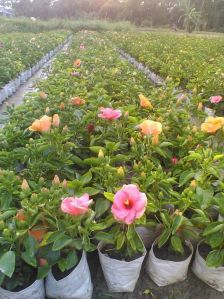
Rosa Red Hibiscus Flower Plant
45 - 75 Per Piece
250 Piece (MOQ)
Hibiscus plant is a common name that can refer to different species of hibiscus, a genus of flowering plants in the family Malvaceae. Some of the species that are called hibiscus plant are: Hibiscus rosa-sinensis, also known as Chinese hibiscus, China rose, Hawaiian hibiscus, rose mallow, and shoeblack plant. This is a tropical evergreen shrub or small tree that has large, showy flowers in various colors. It is widely cultivated as an ornamental plant in the tropics and subtropics, but its native range is Vanuatu1. Hibiscus syriacus, also known as rose of Sharon, althea, and shrub althea. This is a deciduous shrub that produces hollyhock-like flowers in shades of pink, purple, blue, and white. It is native to Asia and is popular for its late summer blooming season, drought tolerance, and low maintenance2. Hibiscus mutabilis, also known as Confederate rose, Dixie rosemallow, cotton rose, or cotton rosemallow. This is a deciduous shrub or small tree that has flowers that change color from white to pink to red during the day. It is native to southern China and is long cultivated for its showy flowers3. All these species belong to the same subfamily (Malvoideae) and tribe (Hibisceae) of the Malvaceae family. They have similar characteristics such as five-petaled flowers with prominent stamens, alternate leaves with serrated margins, and fruit capsules with many seeds. However, they differ in their size, shape, color, and growing conditions. If you want to grow a hibiscus plant in your garden or indoors, you should choose the species that suits your climate and preference best. You can find more information about each species in the web search results I have provided for you. I hope this helps!
Color : Orange, Pink, Red, White, Yellow
Application : Planting
Style : Fresh
Packaging Type : Poly Bag
Country of Origin : India
...more
Foxtail Palm Plant
220 - 2,500 Per
150 piece (MOQ)
Foxtail Palm Plants are a type of palm tree that belongs to the Arecaceae family. They are native to Queensland, Australia, and have a distinctive appearance with their bushy fronds that resemble the tail of a fox. They are also known by their scientific name, Wodyetia bifurcata, which honors an Aboriginal bushman from their native region1. Foxtail Palm Plants are popular for landscaping in tropical and subtropical areas, as they are fast-growing, adaptable, and ornamental. They can grow up to 30 feet tall and produce clusters of red fruits that attract birds2. Foxtail Palm Plants need full sun, well-draining soil, and regular watering to thrive. They are also self-cleaning, meaning that their dead leaves fall off on their own3. Foxtail Palm Plants are easy to grow and care for, as long as they are provided with the right conditions. They can make any garden look like a tropical paradise with their lush and feathery foliage.
Color : Green
Application : Plantation
Feature : Eco-friendly, Longer Shelf Life
Country of Origin : India
...more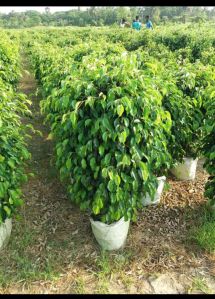
Ficus Plant
110 - 550 Per Piece
100 Piece (MOQ)
A ficus plant is a type of plant that belongs to the genus Ficus, which includes about 850 species of woody trees, shrubs, vines, epiphytes and hemiepiphytes1. Ficus plants are native to tropical and subtropical regions of the world, and some of them produce edible fruits called figs. Ficus plants are also popular as ornamental plants, especially as houseplants, because they have glossy leaves and can adapt to various light conditions. Some common types of ficus plants are: Weeping fig ( Ficus benjamina ): This is the most common type of ficus plant that people refer to as a ficus. It has a tree-like shape with a single trunk and a spreading canopy. It can grow up to 10 feet (3 m) tall indoors, and it has dark green or variegated leaves. It is also used as a bonsai plant. Rubber plant ( Ficus elastica ): This is another type of ficus plant that has large, thick, oval-shaped leaves that can be dark green, burgundy, or variegated. It can grow up to 8 feet (2.4 m) tall indoors, and it is easy to care for. It is also known for its air-purifying properties. Fiddle-leaf fig ( Ficus lyrata ): This is a type of ficus plant that has large, fiddle-shaped leaves that are dark green and glossy. It can grow up to 6 feet (1.8 m) tall indoors, and it prefers bright indirect light. It is a trendy plant for interior design. Audrey ficus ( Ficus benghalensis ): This is a type of ficus plant that has oval-shaped leaves that are dark green and velvety. It can grow up to 10 feet (3 m) tall indoors, and it likes bright indirect light. It is also known as the banyan tree or the strangler fig. Sacred fig ( Ficus religiosa ): This is a type of ficus plant that has heart-shaped leaves that are light green and glossy. It can grow up to 6.5 feet (2 m) tall outdoors in warm climates, and it likes full sun. It is also considered sacred in some religions, such as Hinduism and Buddhism.
Color : Green
Country of Origin : India
Soil Specific : Clay
Other Necessities : Full Sun Exposure, Fast Growth
...more
Duranta Plant
10 - 25 Per Piece
500 Piece (MOQ)
The Duranta plant, also known as Duranta erecta, is a popular ornamental shrub or small tree in tropical and subtropical regions. It is known for its attractive foliage, colorful flowers, and ornamental berries. Here is more detailed information about the Duranta plant: Appearance: Duranta plants are characterized by their vibrant and attractive features. They typically have small, oval, glossy green leaves. The plant produces clusters of tubular flowers that can be blue, purple, white, or gold, depending on the cultivar. These flowers are usually followed by small, spherical, and colorful berries. Growth Habit: Duranta plants can grow as shrubs or small trees, depending on how they are pruned and trained. They tend to have a bushy and spreading growth habit. Mature plants can reach heights of 6 to 15 feet (1.8 to 4.5 meters) or even taller. Location: Duranta plants thrive in tropical and subtropical regions. They are well-suited for USDA hardiness zones 9-11. They prefer full sun to partial shade and well-draining soil. These plants do well in warm and sunny climates. Flowers and Fruits: Duranta plants produce clusters of small tubular flowers, which are attractive to pollinators like butterflies and bees. After flowering, they often develop small, colorful berries. While these berries can be visually appealing, they are toxic if ingested. Care and Cultivation: Duranta plants are relatively easy to care for. They require regular watering, especially during the growing season. Pruning can help maintain their shape, control their size, and encourage flowering. Fertilizing with a balanced, slow-release fertilizer is recommended to promote healthy growth. Uses: Duranta plants are commonly used for ornamental purposes in gardens and landscapes. They work well as hedges, borders, or specimen plants due to their colorful foliage and flowers. In tropical regions, they are often used for privacy screens or windbreaks. You can also grow them in containers or as potted plants. Varieties: There are several Duranta species and cultivars, each with its own unique features. For example, Duranta erecta 'Geisha Girl' is known for its variegated leaves, while Duranta erecta 'Sapphire Showers' has striking bright blue flowers. It's important to note that while Duranta plants are valued for their ornamental qualities, they can become invasive in some regions, displacing native vegetation. Before planting Duranta, check with local authorities or horticultural experts to ensure it is a suitable and non-invasive choice for your area. Duranta plants are cherished for their stunning colors and adaptability in landscaping and gardening, making them a popular choice for those looking to add a touch of tropical beauty to their outdoor spaces.
Color : Green
Size : 2 to 5inch
Style : Fresh
Feature : Eco Friendly, Freshness
Country of Origin : India
Plant Type : Duranta Plant
...more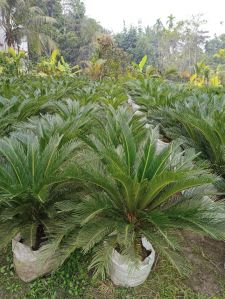
Cycas Palm Plant
130 - 1,150 Per
200 pieces (MOQ)
Cycas is a genus of cycad, and the only genus in the family Cycadaceae. About 113 species are accepted, which are native to the Indo-Pacific, East Africa and Madagascar.
Color : Green, Grey
Feature : Eco-friendly, Longer Shelf Life
Country of Origin : India
...more
Croton Plant
25 - 80 Per
250 Piece (MOQ)
The Croton plant, scientifically known as Codiaeum variegatum, is a popular and colorful houseplant known for its striking and vibrant foliage. It is native to Malaysia, the Pacific Islands, and northern Australia. Croton plants are appreciated for their colorful, leathery leaves that come in a wide range of colors and patterns. Some common features of Croton plants include: Foliage: Croton leaves are the main attraction of this plant. They come in various shapes, sizes, and colors. The leaves may be narrow, broad, elongated, or oval, and their colors can range from green, red, orange, yellow, and even purple. The leaves often have multi-colored veins and edges, which create a visually striking appearance. Maintenance: Croton plants are relatively easy to care for, but they require specific conditions to thrive. They prefer bright, indirect light and warm temperatures. They should be protected from drafts and cold temperatures, as they are sensitive to cold. Watering: These plants require regular watering, but they don't like to be overwatered. The soil should be kept consistently moist but not waterlogged. It's essential to let the top inch of the soil dry out before watering again. Humidity: Croton plants appreciate higher humidity levels. You can increase humidity by misting the plant or placing a humidifier nearby. This will help prevent the leaves from drying out and browning. Pruning: Regular pruning can help maintain the shape and size of the Croton plant and promote bushier growth. You can remove any leggy or damaged growth to keep the plant looking its best. Fertilizing: During the growing season (spring and summer), you can feed your Croton plant with a balanced, water-soluble fertilizer every 4-6 weeks. Toxicity: It's important to note that Croton plants are toxic to humans and pets if ingested. Keep them out of reach of children and animals. Croton plants can be a beautiful and bold addition to your indoor plant collection, bringing a splash of color and vibrancy to your home. However, their care requirements, especially regarding light and humidity, should be carefully considered to ensure they thrive.
Country of Origin : India
Plant Type : Croton Plant
Usage : Decoration
...more
Coconut Tree
130 - 450 Per
100 piece (MOQ)
The coconut tree, scientifically known as Cocos nucifera, is one of the most versatile and important trees in tropical and subtropical regions. It is often referred to as the "Tree of Life" due to the multitude of uses and benefits it provides. Here's some information about the coconut tree: Appearance: The coconut tree is a tall, slender, and elegant palm with a single, unbranched trunk that can reach heights of 60 to 100 feet (18 to 30 meters) or more. Its long, feathery fronds, made up of pinnate leaves, create a crown of foliage at the top of the trunk. The trunk is often curved and may have scars from old fronds. Fruits: The coconut tree produces coconuts, which are large, round, and fibrous fruits. The mature coconuts have a hard, woody shell, a fibrous husk, and a white, edible flesh (called copra) inside. This flesh can be consumed fresh or used to extract coconut milk and oil. The coconut also contains coconut water, a refreshing, clear liquid that is naturally found inside the young green coconuts. Flowers: Coconut trees produce clusters of small, pale-yellow to greenish flowers, which grow from the leaf axils. These flowers are pollinated by wind or insects and eventually develop into coconuts. Uses: The coconut tree is renowned for its countless uses. It provides food, shelter, clothing, and materials for various purposes. Here are some of its uses: Food: Coconuts are consumed as a source of fresh fruit, coconut water, coconut milk, and coconut oil. The coconut is a key ingredient in a wide range of culinary dishes. Shelter: Coconut leaves and fronds can be used to make thatch for roofing, and the trunk can be used for building materials. Fiber: The husk of the coconut can be used to make coir, a natural fiber used in various products like ropes, mats, and brushes. Fuel: The dried coconut shells can be used as a source of charcoal. Wood: The wood of the coconut tree can be used for various applications, including building furniture. Medicinal Uses: Various parts of the coconut tree are used in traditional medicine in many cultures. Cultivation: Coconut trees thrive in tropical and subtropical coastal regions with high humidity and abundant rainfall. They prefer well-drained, sandy or loamy soil. They are salt-tolerant and can withstand seaside conditions. Regular watering is important for young coconut trees, but mature trees can tolerate drought. They require a sunny and warm climate. The coconut tree is an iconic and invaluable plant in many parts of the world, serving both as a vital food source and providing numerous products and materials that support daily life. It plays a central role in the culture, economy, and livelihood of people living in regions where it is cultivated.
Color : Green
Packaging Type : Pvc Bag And Poly Bage
Country of Origin : India
...more
christmas plant
250 - 850 Per Piece
100 Piece (MOQ)
These plants are used to bring a festive and decorative atmosphere to homes, offices, and public spaces during the Christmas season. They often carry symbolic meanings and traditions associated with the holiday, and their vibrant colors and unique features add to the overall holiday decor.
Usage/Application : Planting
Size : Multisizes
Country of Origin : India
...more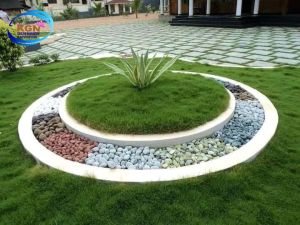
landscape design
12 - 65 Per Square Feet
Landscape design is the art and science of planning and arranging outdoor spaces to create aesthetically pleasing, functional, and sustainable environments. It encompasses a wide range of elements, including plants, hardscapes, water features, and more. Here are some key aspects of landscape design: Site Analysis: The first step in landscape design is to conduct a thorough site analysis. This involves assessing the existing conditions of the site, including its topography, soil quality, climate, and the presence of existing structures or vegetation. Functional Design: Determine the practical uses of the outdoor space. This may include areas for relaxation, dining, gardening, children's play, or outdoor entertainment. Functional design ensures that the landscape meets the needs and preferences of the property owner. Aesthetics: Aesthetics play a crucial role in landscape design. Consider factors like color, texture, form, and scale when selecting plants and materials. Achieving a balanced and harmonious composition is essential for creating an attractive landscape. Plant Selection: Choosing the right plants is a fundamental aspect of landscape design. Consider factors such as climate, soil conditions, sun exposure, and maintenance requirements when selecting trees, shrubs, flowers, and groundcovers. Hardscape Elements: Hardscape features, such as patios, pathways, retaining walls, and outdoor structures, add structure and functionality to the landscape. These elements should complement the overall design and provide utility. Sustainability: Sustainable landscaping focuses on conserving resources and reducing environmental impact. This can include water-efficient irrigation, native plantings, and using environmentally-friendly materials. Water Features: Incorporating water features like ponds, fountains, or waterfalls can enhance the beauty and ambiance of the landscape. Proper planning and maintenance are essential for the success of water features. Lighting: Outdoor lighting not only extends the use of outdoor spaces into the evening but also highlights key elements of the landscape. Effective lighting design should create a safe and inviting environment. Maintenance Plan: A well-designed landscape should be manageable in the long term. Develop a maintenance plan to ensure the health and longevity of plants and the overall landscape. Budget and Timeline: Consider your budget and project timeline when planning your landscape design. Make decisions that align with your financial resources and desired completion date.
Brand Name : Landscape Design
...moreOpening Hours
K.G.N Green Nursery was established in the year 2001 in Kolkata, West Bengal. We are the manufacturer and trader of natural grasses, live plants, live trees and a lot more. The products of our company are quality assured.
Our Goals
To seek to be our Customer\'s favourite equipment supplier.
Our Mission
To become a leader in providing food service equipment solutions. We constantly build upon proven innovation and are customer-focused on new technologies that improve global food service operations.
Our Vision
Why Us?
We have been continuously applauded by our prestigious customers for our quality-oriented approach and on-time delivery.
Owing to the following reasons, we have got an edge overother market players:
Choose to deal with us and order from our company. We are the best for these products.